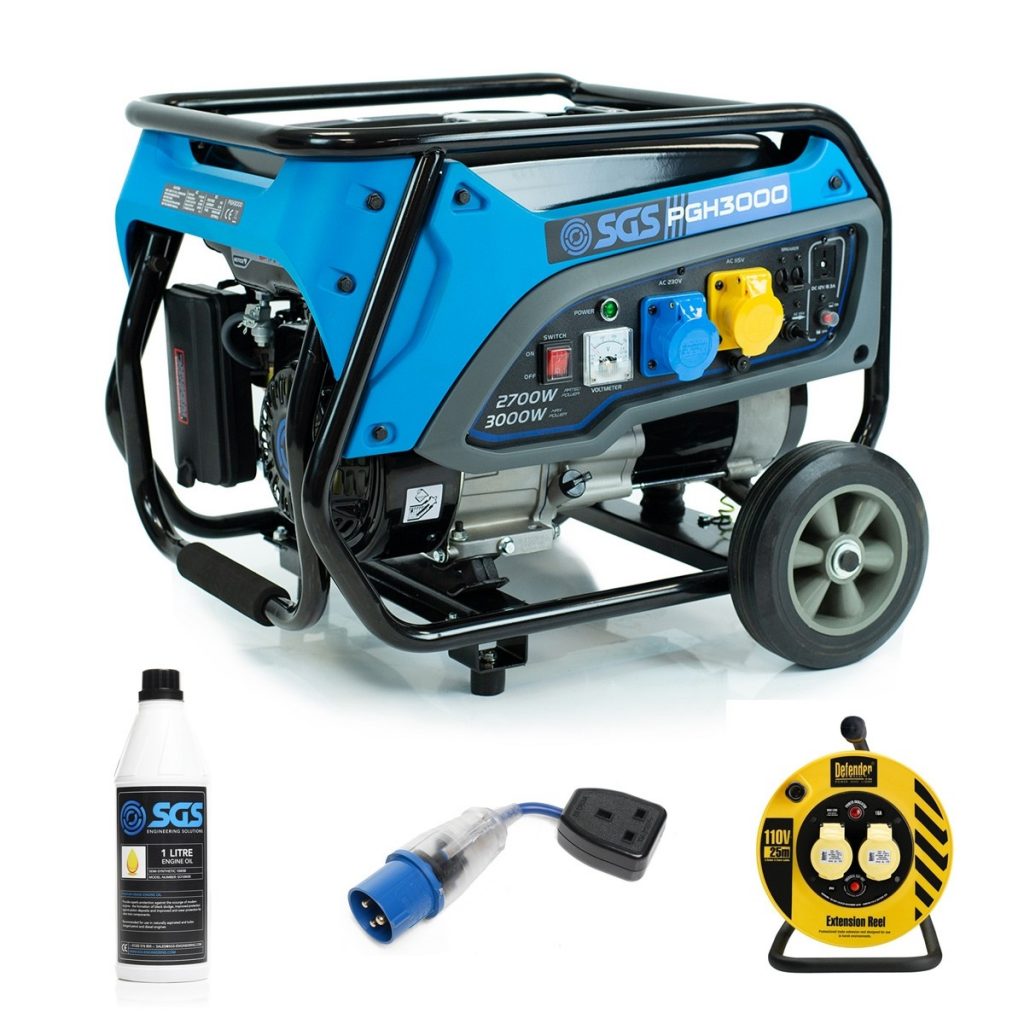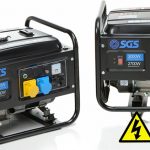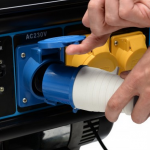Most of us at some point in our lives will have faced a power outage at home. Aside from the obvious inconvenience this causes, it can also be dangerous – particularly at night. Not only is there the risk of injury to you and those around you, you also might rely on electric heating to keep you warm. Equally, without power, important appliances such as fridges and freezers stop working, meaning you could end up out of pocket when all your food ends up spoiled.
There are numerous reasons for power cuts and often they are beyond our control, but rather than sitting and waiting in the cold and dark for power to be restored, you should have a portable generator on standby. These fantastic and reliable pieces of equipment can be used to power important appliances and facilities until the main supply is back up and running. See our step by step guide on how to use your portable generator in case of a power cut.
Place your generator a safe distance from your home and your neighbours’ homes. All doors and windows should be shut as well, to make doubly sure any dangerous fumes from the portable generator don’t enter your house. Try to keep it at least 5 metres away.
Check your generator’s engine has enough oil and fuel to run for as long as possible, if not top this up with the correct types.
You should never plug straight into your home’s wiring as this is very dangerous.
You can plug the appliances you want to power into an adapter, then run this cable to your generator and plug it in directly this way. Again this cable should be able to support the total amount you intend to run through it.
Alternatively, You can install a transfer switch in your home and wire a generator directly into your mains supply. However this should only ever really be attempted by a qualified electrician. With this set up, make sure that you haven’t turned on any of the items connected or flipped any of the breakers on the transfer switch. Turn on your generator (as per the user manual) and allow it to run for a few moments to warm up.
With the power supply ready, without rushing, individually turn on each appliance or load you want to power. Or flip them on using your transfer switch.
Enjoy the new source of power you have, courtesy of your portable generator, while you wait for the main supply to return. At the same time, keep monitoring the generator and what you currently have being powered. When power does return, reverse this setup process to safely disconnect everything.
Wait for your generator to cool down before returning it to its designated storage area. Take extra care to keep your generator clean and free from any potential damage while in storage.
Choosing the Portable Generator
The importance of choosing the right generator cannot be understated. Firstly, you need to calculate the total amount of Watts you need to get from your generator, taking into account the starting wattage for certain items, which will be higher than their typical running amount. Each item you have chosen, from appliances to simple lighting, should have the wattage they use indicated on them.
Naturally, your chosen generator needs to be able to accommodate the amount you intend to use comfortably. For further advice though, look at our very useful Generator Buying Guide, to help inform your decision.
Nobody wants to experience a power cut, but the unfortunate reality is that they do happen and they are more common than you would think. So to ensure you can always provide your home with the power you need for those essential items, check out our latest selection of quality generators here at SGS.
A dual voltage, 6500 W petrol powered generator from SGS Engineering provides a very reliable source of backup or standby electrical power for light trade and domestic uses including powering remote lighting, pressure washers, and water pumps. Comes with 1 litre of 10W30 oil, two fly leads to allow a standard 13 amp 3 pin plug to be used with the generator and a twin outlet cable reel.
Dual voltage, 3000 W petrol powered heavy duty generator. Not only does this offer exceptional value for money but also suits a wide range of users who need a reliable source of remote, portable electricity. This bundle comes with a 1 litre bottle of engine oil, 16a to 13a flylead and twin outlet cable reel to get you started. Also included are a 115 V 16 amp socket and a 230 V 16 amp socket.
This superb dual voltage, heavy duty 3000 W petrol powered generator from SGS Engineering not only offers exceptional value for money but also suits a wide range of users who demand a reliable source of remote, portable electricity.This bundle also comes with a 1 litre bottle of engine oil, and a 16a to 13a flylead to get you started. 115 V 16 amp socket and a 230 V 16 amp socket, and in addition has a 12V DC 8.3amp output.
The SGS Engineering 2.8kVA portable petrol generator with oil and flylead is a powerful and reliable generator. This generator will provide a portable source of electrical backup or standby power for many home applications. Like all of our generators this model is great value for money as it comes with 100% copper motor coils which give you improved power output compared to cheap aluminium coils.
Still need help?
Our in house experts are always on hand for buying advice and to provide bespoke care, regardless of the application.
Call SGS on 01332 576 850 or fill out our contact form today.
















